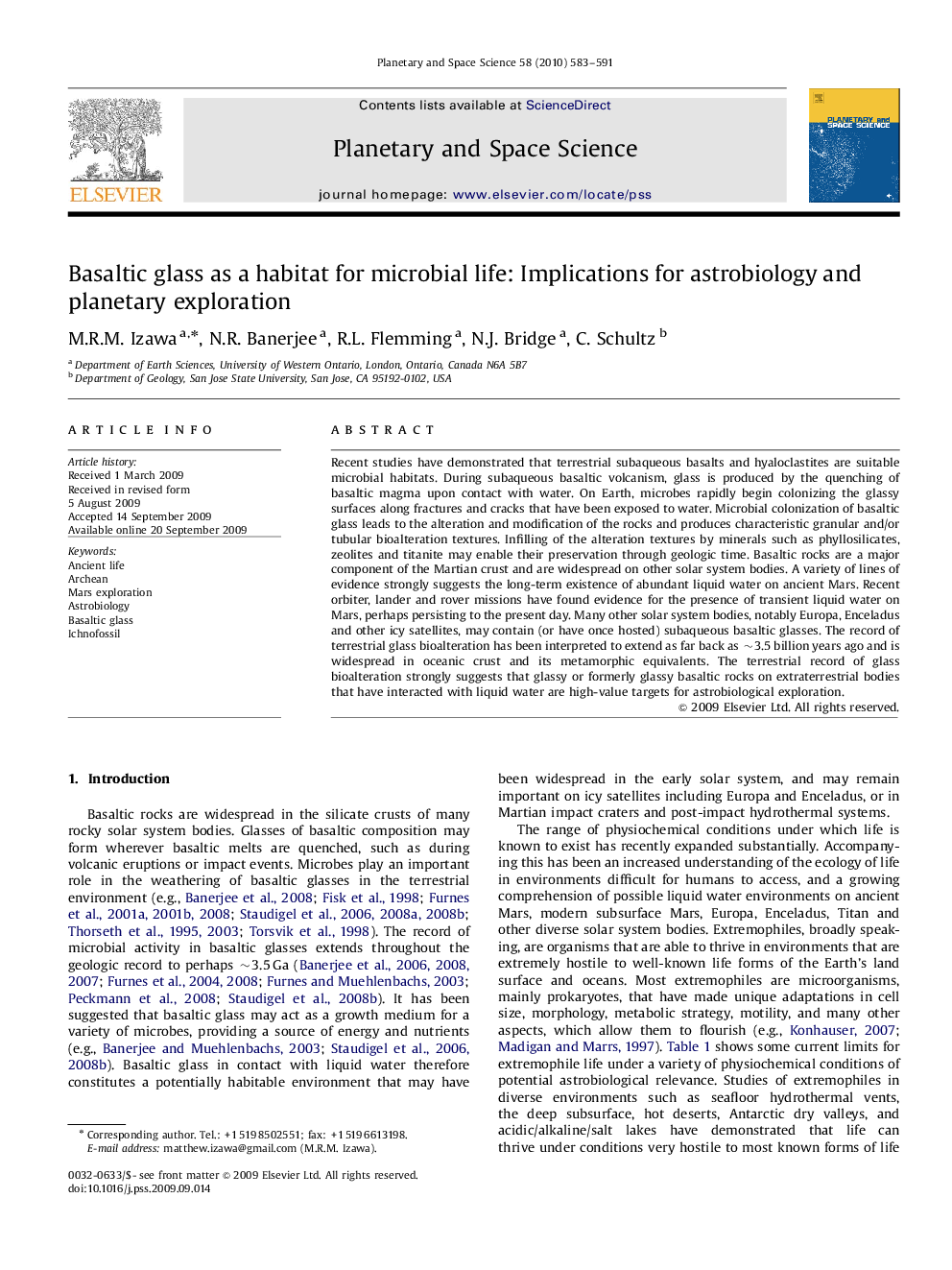| Article ID | Journal | Published Year | Pages | File Type |
|---|---|---|---|---|
| 1781991 | Planetary and Space Science | 2010 | 9 Pages |
Recent studies have demonstrated that terrestrial subaqueous basalts and hyaloclastites are suitable microbial habitats. During subaqueous basaltic volcanism, glass is produced by the quenching of basaltic magma upon contact with water. On Earth, microbes rapidly begin colonizing the glassy surfaces along fractures and cracks that have been exposed to water. Microbial colonization of basaltic glass leads to the alteration and modification of the rocks and produces characteristic granular and/or tubular bioalteration textures. Infilling of the alteration textures by minerals such as phyllosilicates, zeolites and titanite may enable their preservation through geologic time. Basaltic rocks are a major component of the Martian crust and are widespread on other solar system bodies. A variety of lines of evidence strongly suggests the long-term existence of abundant liquid water on ancient Mars. Recent orbiter, lander and rover missions have found evidence for the presence of transient liquid water on Mars, perhaps persisting to the present day. Many other solar system bodies, notably Europa, Enceladus and other icy satellites, may contain (or have once hosted) subaqueous basaltic glasses. The record of terrestrial glass bioalteration has been interpreted to extend as far back as ∼3.5 billion years ago and is widespread in oceanic crust and its metamorphic equivalents. The terrestrial record of glass bioalteration strongly suggests that glassy or formerly glassy basaltic rocks on extraterrestrial bodies that have interacted with liquid water are high-value targets for astrobiological exploration.
